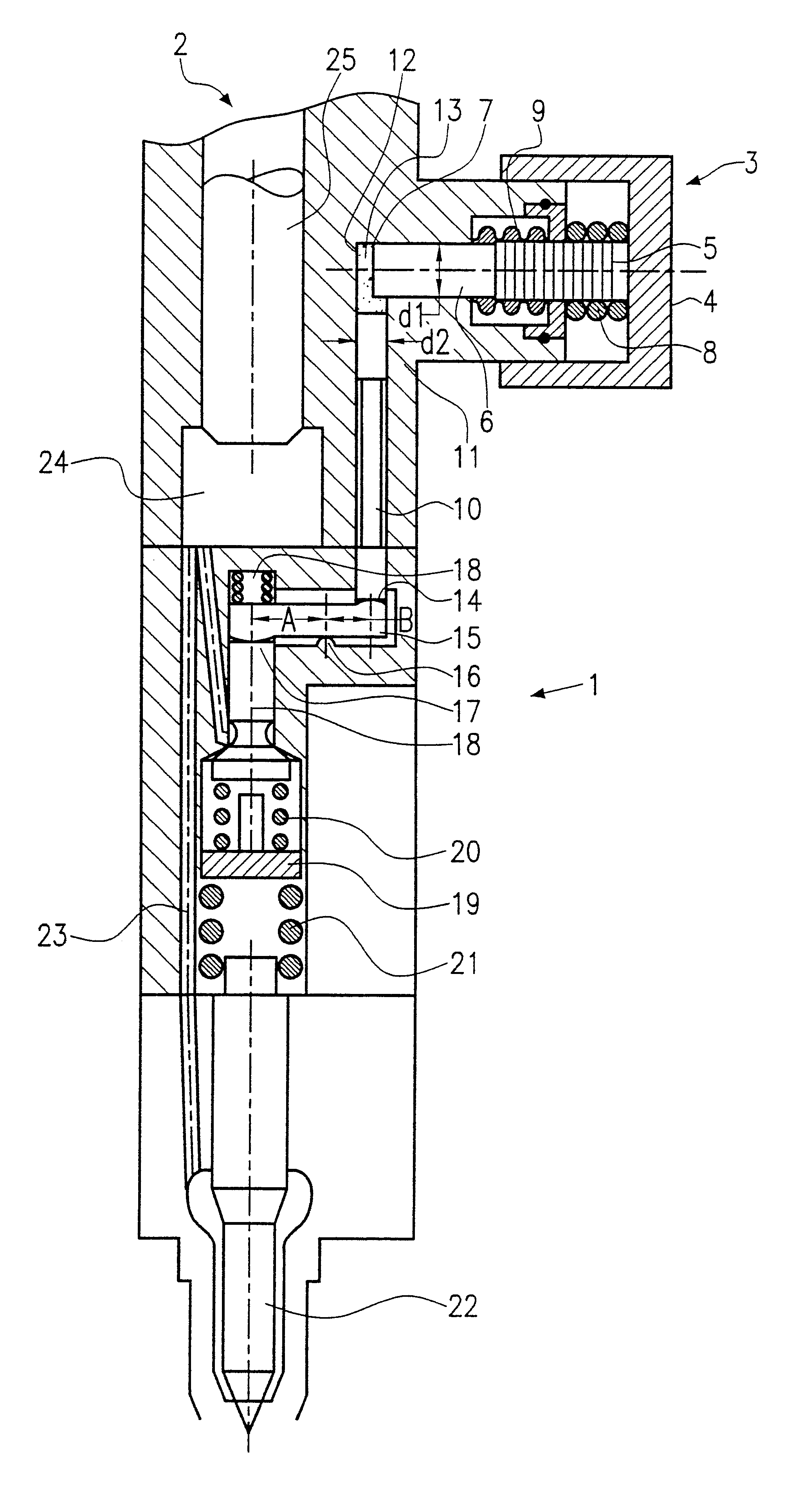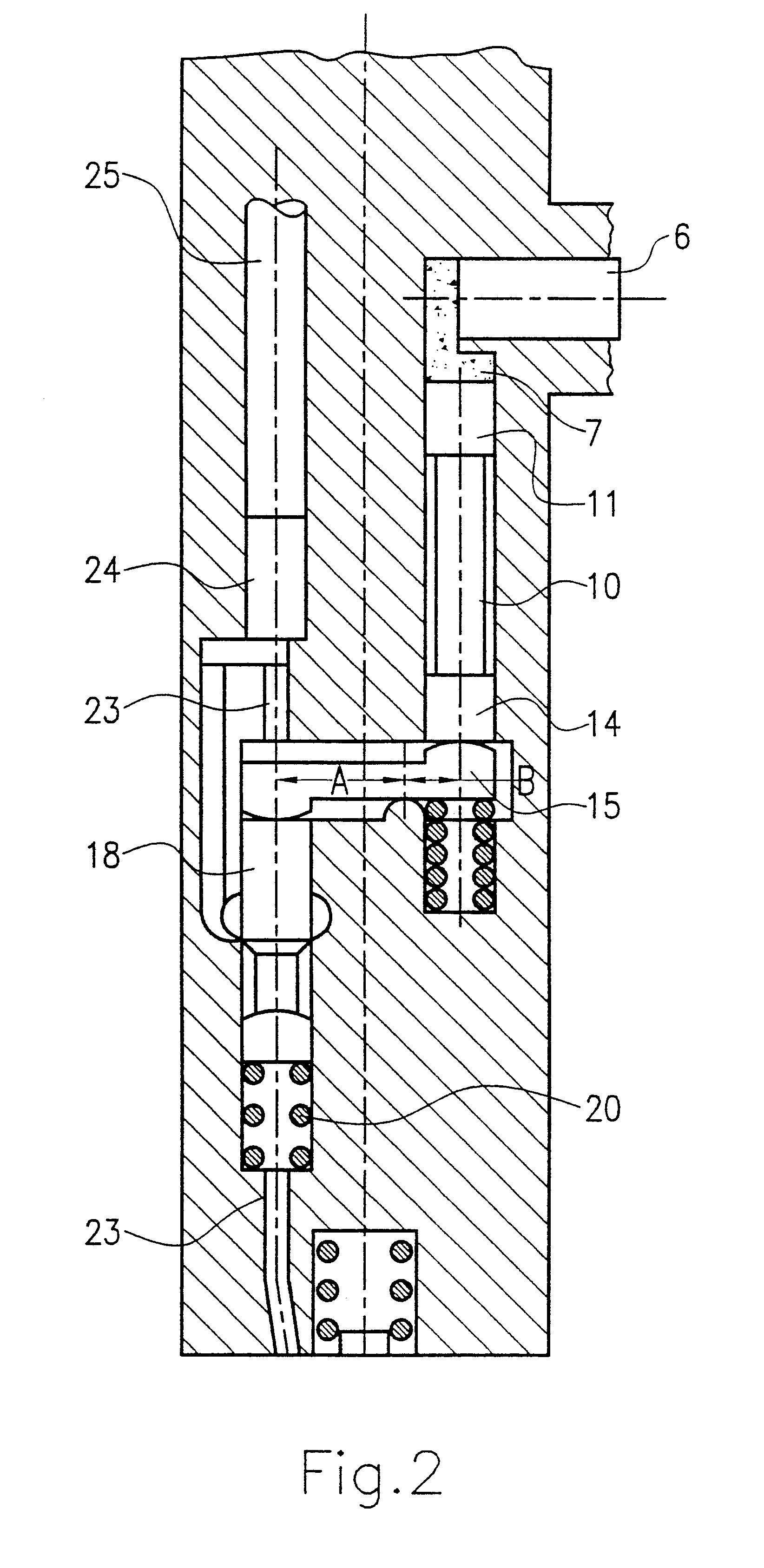Valve for controlling fluids
a valve and fluid technology, applied in the direction of fuel injecting pumps, generators/motors, machines/engines, etc., can solve the problem of only achieving a higher transmission ratio, e.g., approximately 1:8
- Summary
- Abstract
- Description
- Claims
- Application Information
AI Technical Summary
Benefits of technology
Problems solved by technology
Method used
Image
Examples
Embodiment Construction
In the first exemplary embodiment shown in FIG. 1, the valve according to the invention is used in an injection system in which the injection pump and the injector constitute a unit (a so-called unit injector system (UIS)). An injection system of this kind is shown in FIG. 1. The injection valve 1 is comprised of a pump unit 2 and a control unit 3. The control unit 3 includes a piezoelectric actuator 5 disposed in a housing 4. The piezoelectric actuator 5 communicates with a hydraulic pressure chamber 7 via a piston 6. In this connection, the piezoelectric actuator 5 is prestressed toward the housing 4 by a prestressing spring 8; a sealing element 9 is disposed at the transition region between the piston 6 and the piezoelectric actuator 5 in such a way that the piezoelectric actuator is not exposed to the fluid in the hydraulic pressure chamber 7.
In FIG. 1, a push rod 10 with an end region 11 adjoins the pressure chamber 7 at a 90.degree. angle to the piston 6. In this connection, t...
PUM
 Login to View More
Login to View More Abstract
Description
Claims
Application Information
 Login to View More
Login to View More - R&D
- Intellectual Property
- Life Sciences
- Materials
- Tech Scout
- Unparalleled Data Quality
- Higher Quality Content
- 60% Fewer Hallucinations
Browse by: Latest US Patents, China's latest patents, Technical Efficacy Thesaurus, Application Domain, Technology Topic, Popular Technical Reports.
© 2025 PatSnap. All rights reserved.Legal|Privacy policy|Modern Slavery Act Transparency Statement|Sitemap|About US| Contact US: help@patsnap.com



